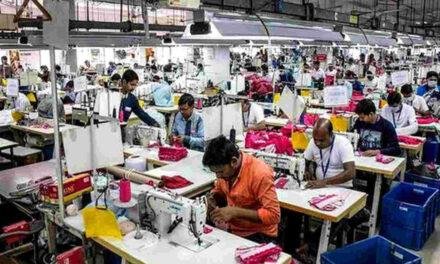
Vietnam has outdone Bangladesh to become the second-largest apparel exporter in the fiscal year 2019- 2020. During this period, the Southeast Asian country fetched $2.11 billion more than that of Bangladesh. However, in the last calendar year, Bangladesh was marginally ahead of Vietnam in the overall apparel and textile export.
Between January and December last year, Bangladesh’s apparels earned $1.17 billion more than that of Vietnam, enabling Bangladesh to retain its second position. During this period, between July 2019 and June 2020, Vietnamese apparels earned $30.94 billion, whereas Bangladesh raked in $28.82 billion, according to the General Statistics Office of Vietnam and the Export Promotion Bureau (EPB). However, earnings of both countries from apparel exports have declined as a result of the ongoing Covid-19 pandemic.
Bangladesh’s earnings from apparel exports have decreased by 18.12 percent from the previous year, whereas Vietnam’s export income fell by 3.09 percent year-on-year. Exporters and economists said Bangladesh has lost its position to Vietnam amid the latest trend of decline in the formers apparel export, which was further contracted by the Covid-19 effects. On the other hand, even when the pandemic reached its peak, Vietnam continued its production and exports. They acknowledged that Vietnam will go ahead of Bangladesh in apparel exports with a bigger margin in the coming days – it is the reality.
Vietnam and the European Union (EU) signed the Free Trade Agreement (FTA) in June last year and it will come into effect from the summer of 2020 as soon as Vietnam ratifies the pact. Experts opined that Bangladesh should diversify its export basket including within the RMG sector. China, as the major investor in Vietnam’s readymade garment (RMG) sector, has been playing a vital role in the latter’s progress in exports.
Bangladesh and Vietnam had been holding the second and third positions respectively in the apparel export over the past decade with a close margin. The business dynamics and environment are quite different in the two competing countries. Bangladesh is a popular destination for low-end manufacturing items at the cheapest rate globally while Vietnam produces high-end apparels with a strong backward linkage industry and educated workforce.
According to industry insiders, in order to maintain its position in the global RMG market, Bangladesh needs loan facilities as well as easy access to cash assistance on freight on board.
“There are many reasons why Vietnam has surpassed Bangladesh in the apparel export. For instance, they have diversified products within the sector plus they export textiles”, said Ahsan H Mansur, executive director at the Policy Research Institute of Bangladesh. He explained that the RMG contributed about 24 percent to their export earnings, while in Bangladesh, it accounts for about 84 percent.
The economist also mentioned Vietnam’s preparedness to cope with Covid-19 with the country having managed to continue its production and exports during the pandemic. If the government wants to diversify the apparel export basket, they should incentivise the man made, fibre-based products instead of cotton-based ones, Ahsan pointed out. The economists also suggested that the government withdraw the cash incentive from cotton-based items as they’ve already gained a strong base, and encourage more investment in man-made fibre products, he added.
Globally, demand for such products is growing. Currently, its market share is about 40 percent of apparel items, which was 28 percent 10 years ago and it might reach 50 percent in the next 10 years, said Dr Ahsan.
Mentioning Bangladesh’s market position in man-made fibre products, he said, “We are moving to the opposite direction with our stake falling to 18 percent from about 21 percent in the 10 years before.” Some 60 percent of investments in Vietnam made by larger foreign companies have helped the country produce diversified products and build a strong technological base, he added. “Vietnam’s export growth remained unhurt during March-May when Covid-19 took a serious turn globally. But, Bangladesh’s exports steeply nosedived during the time,” said Kutubuddin Ahmed, chairman at Envoy Textile Ltd, the world’s greenest denim textile mills.
“Vietnam was one of the world’s top five countries, which handled the pandemic smartly by keeping their deaths and infections at a minimum. As a result, buyers continued placing work orders to the country”, said Kutubuddin, also former president at Bangladesh Garment Manufacturers and Exporters Association (BGMEA).
The FTA sign between Vietnam and the EU will come into effect from the summer of 2020. Many EU buyers have already placed new orders in Vietnam, which have reflected in their export earnings, said Mohammed Abdus Salam, acting president at the BGMEA. The country has advantages; educated workers with high efficiency, large number of foreign investments and is producing diversified and value-added products, he added.
While Bangladeshi apparel industries remained closed during the March-May period, Vietnam did not close a factory even for a single day, said Salam, also managing director at Asian Apparels Ltd.





















